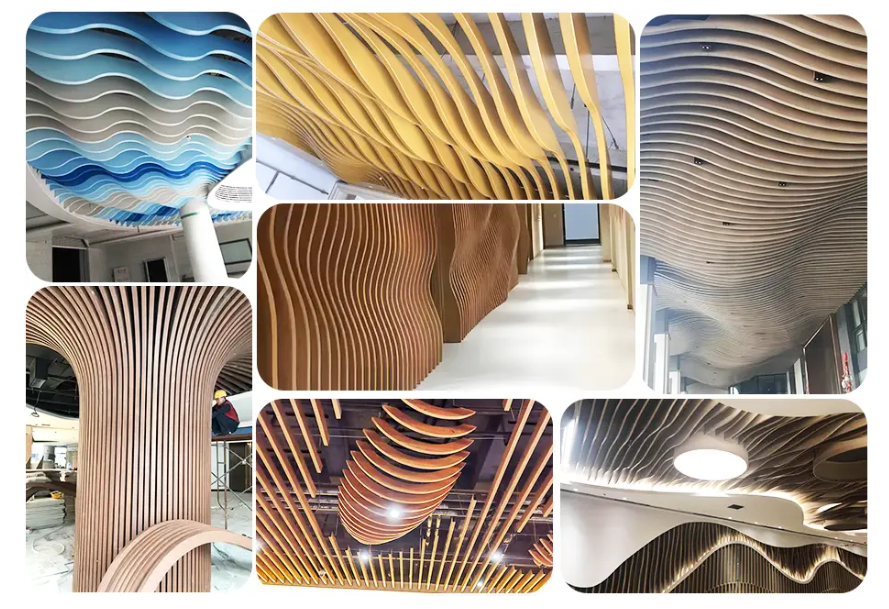Email format error
Email cannot be empty
Email already exists
6-20 characters(letters plus numbers only)
The password is inconsistent
Email format error
Email cannot be empty
Email does not exist
6-20 characters(letters plus numbers only)
The password is inconsistent


Imagine walking into a room where the ceiling flows like waves, creating a serene and sophisticated atmosphere. A wave design ceiling offers more than just architectural interest—it brings a sense of movement and tranquility, turning any space into a work of art. Whether you’re designing a home, office, or commercial space, wave ceilings add a modern, dynamic touch that captivates the eye and elevates the overall ambiance.
In this blog, we’ll explore the key features, benefits, and creative possibilities of wave ceilings, helping you decide if this design is the right choice for your next project.
A wave design ceiling incorporates undulating patterns or curved elements that mimic the natural flow of water or air. These designs can be achieved through materials like gypsum, wood, metal, or acoustic panels, often suspended to create a three-dimensional effect.
From living rooms to restaurants and retail spaces, wave ceilings offer a versatile solution for adding personality and depth to interiors. Their aesthetic appeal works well in both modern and transitional designs.

The flowing lines and curves of a wave ceiling create a unique focal point, enhancing the visual appeal of any room. It breaks away from the monotony of flat ceilings and adds a touch of sophistication.
Wave ceilings can incorporate acoustic panels, making them an excellent choice for spaces where sound quality matters, such as auditoriums, offices, or home theaters.
The contours of a wave ceiling can be paired with innovative lighting solutions like LED strips or spotlights to enhance the dimensionality and mood of the space.
Wave ceilings can be tailored to suit different aesthetics, whether you prefer subtle curves or bold, dramatic waves. Colors, materials, and finishes offer endless customization possibilities.
Gypsum is a popular choice for creating wave designs due to its flexibility and ease of shaping. It’s lightweight, durable, and can be painted to match any interior style.
For a natural and warm look, wood wave ceilings are ideal. They bring organic texture and richness, making them suitable for both residential and commercial spaces.
Metal wave ceilings, often made from aluminum or steel, provide a sleek and modern aesthetic. They are durable, low-maintenance, and available in various finishes.
Incorporating acoustic panels into wave designs enhances sound absorption, creating a quieter and more comfortable environment, especially in large spaces.
Evaluate the size and purpose of your room. Larger spaces can accommodate bold, dramatic waves, while smaller spaces may benefit from subtle curves.
Integrate lighting that complements the curves of the ceiling. LED strips along the edges or recessed lighting within the waves can add depth and drama.
Choose materials and colors that harmonize with the rest of the room’s design. For example, wood wave ceilings pair well with earthy tones, while metal waves complement minimalist, industrial aesthetics.
Installing a wave design ceiling requires expertise to achieve the desired effect. Partner with experienced designers and contractors for the best results.
A wave ceiling is an artistic statement, adding character and sophistication to spaces that would otherwise feel bland or conventional.
The flowing design evokes a sense of calm and relaxation, making it an excellent choice for wellness spaces, bedrooms, or lounges.
Unique architectural features like wave ceilings can increase the appeal and value of a property, making it stand out in the market.
Proper maintenance ensures the longevity and beauty of your wave ceiling:
As experts in wave design ceilings, we offer customized solutions tailored to your specific vision. Our team uses premium materials and advanced techniques to deliver exceptional results, ensuring your ceiling is as functional as it is beautiful. Whether you’re renovating a home or designing a commercial space, we’re here to bring your ideas to life.
Explore our range of innovative ceiling designs and discover how a wave design ceiling can transform your space. Let’s create something extraordinary together!